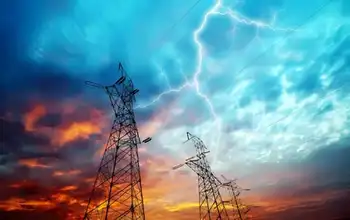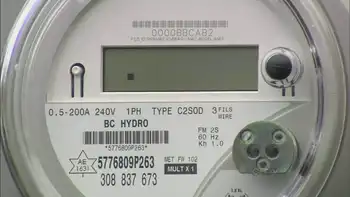Third turbine for farm brings smiles
By McClatchy Tribune News
Arc Flash Training CSA Z462 - Electrical Safety Essentials
Our customized live online or in‑person group training can be delivered to your staff at your location.

- Live Online
- 6 hours Instructor-led
- Group Training Available
With wind gusts as high as 40 mph, Glenn Cook, who recently erected his third wind turbine at Cider Hill Farm, said his three turbines generated as much energy in 24 hours as he would typically produce in one week. As communities like Newburyport and Newbury mull the potential of wind power for their communities and work to set up rules to govern them, Cook is ahead of the game.
Almost one year after Cider Hill Farm first erected two wind turbines to help supply the farm with electricity, Cook is praising his now three turbines - the third was added in January - as well as the recent addition of solar panels.
"I love them; I absolutely love them," Cook said. "I would love to be producing 100 percent of our electricity someday through renewable resources."
Right now, between the turbines and the solar panels, that total is closer to about 30 percent. Calling his turbines a "pioneering" project, Cook said they are producing slightly less than what he had expected. A computer-generated model showing the wind speeds at the farm over-estimated what the wind resources would be, Cook said. Cook had hoped to see production at about 700 to 800 kilowatts hours of electricity a month. The turbines have been giving him closer to 600 in the winter.
In the summer, that will drop to about 400 kilowatt hours or less. "I knew they would produce much more in the winter than they do in the summer," he said. "That being said, I love having them. They are still contributing a lot to our bills."
Cook said the turbine model he has, a Bergey, does particularly well in Vermont or in really high locations, such as mountaintops. "Today is a particularly good day for the turbines," Cook said, with the strong wind gusts. Cook checks the meters and sends the turbine readings to the Massachusetts Technology Collaborative once a month. Cider Hill Farm first erected a 120-foot-tall tower last January.
In May, it placed a second, identical tower about 80 feet away from the first. This past January, it placed a third turbine at the base of the hill. A portion of the cost to install the turbines was funded by a Massachusetts Technology Collaborative alternative-energy grant. The solar panels were funded with a grant from the Massachusetts Department of Agricultural Resource's Agricultural Environmental Enhancement Program.
The Cooks installed the solar panels in November. Those are producing even more than he expected, Cook said. The panels produce about 900 kilowatt hours during the winter. Last month, with the days growing longer, Cook said he saw about 1,200 kilowatt hours.
The 56 panels were put up on the main barn by the well-known farm store.
"Everybody will see them," Cook said.
Homeowners would probably get half the number of panels, about 25 to 30, to tend to their electrical needs, Cook said. Last month, the farm had a savings of $180 just from the solar panels, Cook said, an investment they will keep getting results from over the next 20 to 30 years. Cook said he plans to spend the next few months installing a wood-fired boiler for his greenhouses - something that will save him money in fuel costs.
Although the turbines have been set up for a while, the Cooks still get phone calls and visits from people wanting to see them or hear more about the farm's plans.
Eventually, Cook said customers might even be able to visit the space where the meters for the turbines are held to see how the readings are done. "There's still a lot of interest," he said.











